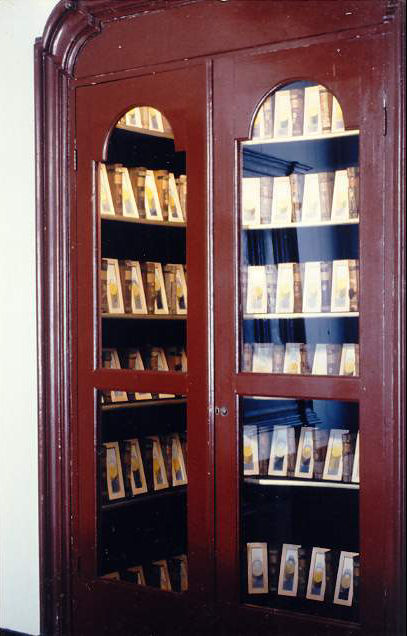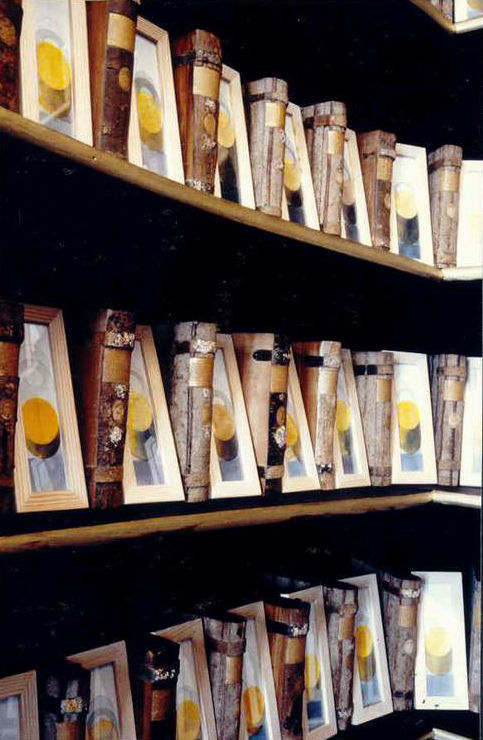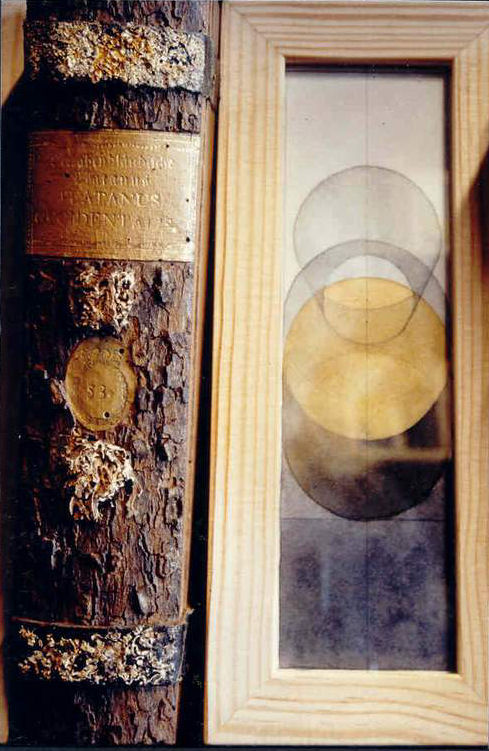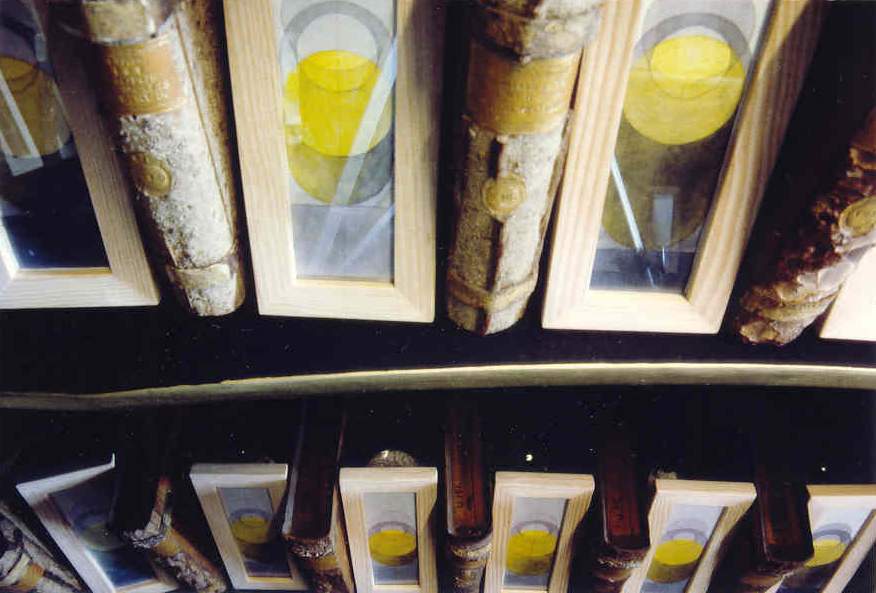|

|
|

|
Von
Schlumbach's Xylotheque
Installation in Museum 't Coopmanshûs,
Franeker, Holland, 1992
Installatie in Museum 't Coopmanshûs, Franeker, 1992 |
|
|

|
I was invited to make an installation in a museum in the northern town
of Franeker, where once had been a university. There is a room in the museum
with circa 45 painted portraits of former professors, hanging in three
rows above each other. A cabinet with glass doors between the professors
contains a 200 years old "Xylotheque" from the former department of biology.
It consists of about 144 wooden boxes in the form of books. Each box contains
information about one kind of tree: a piece of wood, a twig, a leaf, a
flower, seeds, pollen, a nut and even a piece of charcoal. Each box was
made, as far as possible, of wood from the tree involved.
The curator asked me to merge my art with this collection. She had seen
my exhibition of destroyed drawings and it were the aspects of destruction
and hidden information that struck her. I had told her the secret that
I also had destroyed the Bhagavad Gita. She had read that book better than
I did.
| |
|

|
Instead of preparing the installation and working on it, I bought 2
kilos of postage stamps, still glued on converts and cards. In my youth I collected
stamps and they form a strong visual memory for me. I used to make long
lines of all kinds of queens, kings and presidents in different colours
and with different numbers. Still now I love to take stamps off from the
converts in water, to smell the wet paper, to dry them and to order them.
And so I did. I got thousands of the same and I almost got mad, but it
became like a pathological obsession and I had to finish the job.
| |
|

|
All the
time I had the 45 professors and the 144 tree-boxes in my mind and so in
the end I made a series of 144 small jar drawings as series of stamps for
the exhibition. I fixed them in wooden frames and put them between the
wooden boxes of the Betula Alba, the Quercus Robur, the Platanus Occidentalis
and the 141 other trees. The watercolours were standing oblique. I had
taken the same amount of jars with destroyed drawings with the idea to
incorporate them in the installation, but in the end I used them to support
the watercolours.
| |
|

|
It was a nice idea to know that they were supported by
the jars that made the watercolours possible. Only at the lowest shelf
it was possible to catch a glimpse of them.
| |
|
|   
| |







